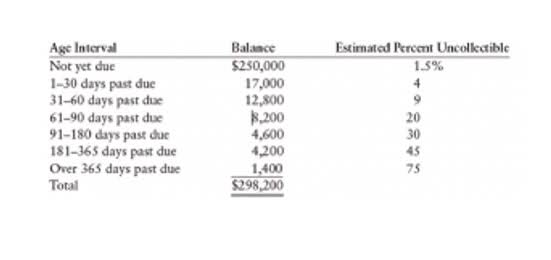
If the result is positive, it means the company has added to its retained earnings balance, while a negative result indicates a reduction in retained earnings. After adding/subtracting the current period’s net profit/loss to/from the beginning period retained earnings, you’ll need to subtract the cash and stock dividends paid by the company during the year. In this case, Company A paid out dividends worth Accounting Periods and Methods $10,000, so we’ll subtract this amount from the total of beginning period retained earnings and net profit. Retained earnings are calculated by adding/subtracting, the current year’s net profit/loss, to/from the previous year’s retained earnings, then subtracting dividends paid in the current year from the same.

By accessing and using this page you agree to the Terms and Conditions.

Generally speaking, a company with a negative retained earnings balance would signal weakness because it indicates that the company has experienced losses in one or more previous years. However, it is more difficult to interpret a company with high retained earnings. For this reason, retained earnings decrease when a company either loses money or pays dividends and increase when new profits are created. Managing retained earnings depends on many factors, including management’s plans for the business, shareholder expectations, the business stage and expectations about future market conditions. For example, a strong retained earnings track record can attract investment capital or potential buyers if you intend to sell your business. This money can partly be distributed as dividends to the stockholders, while also being reinvested for business growth.
Formula For Retained Earnings

If the company made a profit, you add the net income; if there was a loss, subtract it. You can track your company’s retained earnings by reviewing its financial statements. This information will be listed on the balance sheet under the heading “Retained Earnings.” Many companies consider dividend payouts and plan investment strategies at year end. We can help determine what’s appropriate for your situation and answer any lingering questions you might have about your business’s statement of retained earnings. We can cross-check each of the formula figures used in the retained earnings calculation with the other financial statements.
Find your beginning retained earnings balance

As a result, the firm will be less able to pay a dividend than before the purchase was accomplished. To naïve investors who think the appropriation established a fund of cash, this second entry will produce an apparent increase in RE and an apparent improved ability to pay a dividend. GAAP specifically prohibits this practice and requires that any appropriations of RE appear as part of stockholders’ equity. Any probable and estimable contingencies must appear as liabilities or asset impairments rather than an appropriation of RE. The last two are related to management decisions, wherein it is decided how much to distribute in the form of a dividend and how much to retain. As you work through this part, remember that fixed assets are considered non-current assets, and long-term debt is a non-current liability.
- Retained earnings reflect how much profit a company has reinvested into its operations rather than distributing it to shareholders.
- A company that routinely gives dividends to shareholders will tend to have lower retained earnings, and vice versa.
- This step highlights the balance a company must strike between rewarding shareholders and reinvesting in the business.
- Retained earnings are also known as accumulated earnings, earned surplus, undistributed profits, or retained income.
- Retained earnings are a good source of internal finance used by all organizations.
- Retained earnings are a key component of a company’s equity and appear on the balance sheet under the shareholders’ equity section.
- Whether positive or negative, retained earnings appear at the top of the liabilities side of the balance sheet, as part of the company’sshareholders’ equity.
Share This…
- During the same period, the total earnings per share (EPS) was $13.61, while the total dividend paid out by the company was $3.38 per share.
- If a company decides not to pay dividends, and instead keeps all of its profits for internal use, then the retained earnings balance increases by the full amount of net income, also called net profit.
- The amount transferred to the paid-in capital will depend upon whether the company has issued a small or a large stock dividend.
- Retained earnings are a type of equity and are therefore reported in the shareholders’ equity section of the balance sheet.
- Ultimately, the company’s management and board of directors decides how to use retained earnings.
If they are confident that this surplus income can be reinvested in the business, then it can create more value for the stockholders by generating higher returns. The retained earnings formula calculates the balance in the retained earnings account at the end of an accounting period. The strategic deployment of retained earnings is a testament to a company’s foresight and planning. By carefully deciding how to allocate these funds, businesses can align their financial resources with their long-term objectives. For instance, a company aiming to diversify its product portfolio might channel retained earnings into acquiring Partnership Accounting complementary businesses or investing in new product development. This strategic reinvestment not only fosters growth but also mitigates risks by reducing dependency on a single revenue stream.
As such, some firms debited contingency losses to the appropriation and did not report them on the income statement. A company’s management team always makes careful and judicious decisions what is retained earnings normal balance when it comes to dividends and retained earnings. Strong financial and accounting acumen is required when assessing the financial potential of a company. Sandra Habiger is a Chartered Professional Accountant with a Bachelor’s Degree in Business Administration from the University of Washington. Sandra’s areas of focus include advising real estate agents, brokers, and investors.
Where to Find Retained Earnings in the Financial Statements
- By carefully deciding how to allocate these funds, businesses can align their financial resources with their long-term objectives.
- If you don’t pay dividends, you can ignore this part and substitute $0 for this portion of the retained earnings formula.
- Retained earnings (RE) are created as stockholder claims against the corporation owing to the fact that it has achieved profits.
- The income statement (or profit and loss) is the first financial statement that most business owners review when they need to calculate retained earnings.
- They are a measure of a company’s financial health and they can promote stability and growth.
Equity refers to the total amount of a company’s net assets held in the hands of its owners, founders, partners, and shareholders (residual ownership interest). Retained earnings refer to the total net income or loss the company has accumulated over its lifetime (after dividend payouts are subtracted). Lower retained earnings can indicate that a company is more mature, and has limited opportunities for further growth, but this isn’t necessarily a negative. Retained earnings being low indicates that much of the company’s profits are paid out to shareholders in dividends. For newer companies looking to expand, it’s common to see higher retained earnings, since they will focus on reinvesting profit into the business.
Where Is Retained Earnings on a Balance Sheet?
These earnings are considered “retained” because they have not been distributed to shareholders as dividends but have instead been kept by the company for future use. Retained earnings are calculated by adding/subtracting the current year’s net profit/loss to/from the previous year’s retained earnings and then subtracting the dividends paid in the current year from the same. Another important ratio is the debt-to-equity ratio, which compares a company’s total liabilities to its shareholders’ equity. A robust retained earnings balance can improve this ratio by bolstering equity, thereby reducing the company’s reliance on debt. This lower leverage can be particularly appealing to risk-averse investors, as it suggests a more stable financial structure.